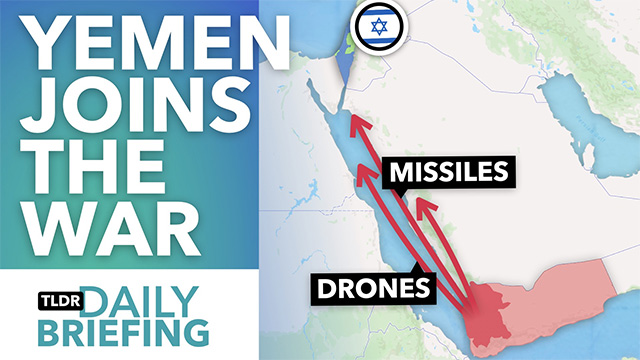
“In Yemen, there is wisdom,” goes the medieval Arab saying.
Western media leaders are unable to assess accurately the growing power of the Middle East ‘Axis of Resistance’ due to their deeply held prejudices, stresses Rami Khouri, distinguished Fellow at the American University of Beirut, a journalist and book author with 50 years of experience covering the Middle East.
Remember that, if you’re trying to sort out how the Israel-Palestine confrontation in Gaza rattles the Middle East – because ongoing Yemeni attacks against Israel-linked ships in the Red Sea clarify one of the region’s most important political dynamics of recent times.
The rocket and drone attacks on Israeli-owned or -bound ships in recent weeks are a show of support for besieged Palestinians in Gaza by Ansar Allah (Houthis), who control most of northern Yemen. Ansar Allah say they would stop these attacks only when Israel ends its genocidal siege and bombardment of the Palestinian enclave.
These attacks are part of a coordinated military reaction by the three core Arab members of the Iran-led anti-Israel (and anti-West) “Axis of Resistance”, Hezbollah, Hamas and Ansar Allah, to Israel’s latest assault on the Palestinians.
Any assessment of how the region has evolved since October 7, and what likely lies ahead, must acknowledge three critical points relating to the Axis of Resistance’s regional network, military capabilities and trajectory.
The widespread fear in the West that this latest Israel-Hamas confrontation would spark a full-fledged regional war between the US-Israel and half a dozen Arab-Iranian forces has not materialised. However, neither has the confrontation remained confined to Gaza – it has sparked the first serious coordinated battlefield action by the Axis of Resistance across the region. This reflects Hezbollah’s talk all year of the “unity of fronts”, ie, Axis members now coordinate and assist one another in battle, or between battles, in times of preparation.
For decades, Hezbollah and Hamas were the only two Arab powers that faced down Israel militarily, and forced it into ceasefires, prisoner exchanges and other concessions. Ansar Allah’s ongoing drone and missile attacks on Red Sea shipping routes will likely similarly challenge Israel. These attacks may eventually provide the Yemeni group with important leverage against its Western adversaries, especially if, as expected, the US and Israel do not send ground troops into Yemen, but rely solely on air power in their efforts to protect trade routes.

The emerging reality is that the Axis of Resistance is growing stronger, and will likely continue to do so if the issues that drive the partnership remain unresolved – especially the Palestine conflict, and Israeli-American aggression, threats or sanctions against Arab parties. Former American diplomat in Yemen Dr Nabeel Khoury, now a senior fellow at the Arab Center Washington, also explained to me in an interview that after the end of the war in Yemen, Ansar Allah now seem ready to act on a regional level.
Yet you would be ignorant of this if your knowledge about the region comes from the mainstream US media. For the American media largely follow the American political elite, and both tend to ignore Middle East realities that do not comply with Western preconceptions of “weak” Arabs who only respond to the use of force by “righteous” Israeli-American armies” – despite the recent events in Palestine, Lebanon, and Yemen that have shattered such racist visions for good.
The increasing power, integration, and influence of the Axis of Resistance rank among the most significant geo-strategic developments in the Middle East in the last half century.
read more in our Telegram-channel https://t.me/The_International_Affairs

 11:26 26.12.2023 •
11:26 26.12.2023 •






















